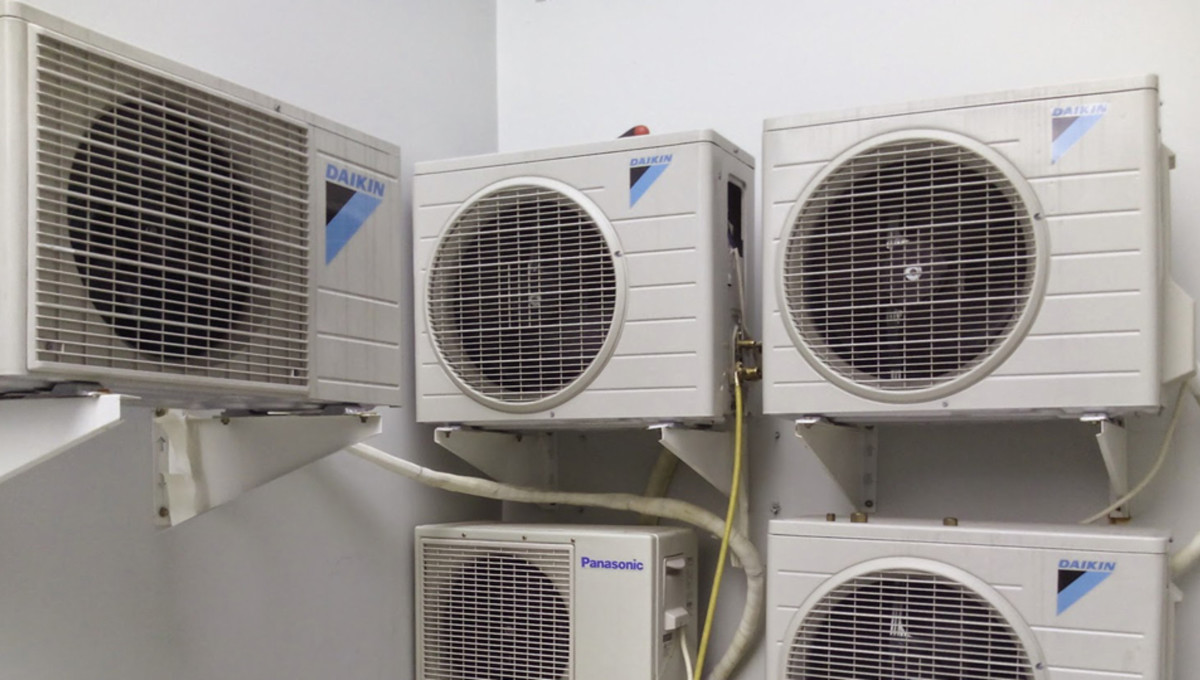Air Conditioning System
Table of Contents

As the summer months approach, we all like to enjoy the warmer weather and longer evenings, but as much as we like the nicer weather, the heat can also cause discomfort inside our homes and workplaces. This is where an air conditioner can really improve your standard of home life. But what is an air conditioner and how does it work?
Air Conditioning System: What is an Air Conditioner
An air conditioner system cools and dehumidifies air by circulating refrigerant through a cycle of evaporation and condensation. It absorbs heat from the internal atmosphere and releases it outside, lowering the indoor temperature and humidity levels, maintaining a desired temperature.
How Do Air Conditioners Work
An air conditioning system circulates a refrigerant that absorbs heat from internal air and deposits it outside through the process of the refrigeration cycle. The cycle consists of four main components: the compressor, condenser, expansion valve and evaporator.
- Compressor – Compresses the refrigerant, increasing its pressure and temperature.
- Condenser – Releases absorbed heat externally as the high-pressure gas condenses into a liquid.
- Expansion Valve – Reduces the pressure of the refrigerant, cooling it further.
- Evaporator – As the cold refrigerant passes through, it absorbs heat from the indoor air, cooling it.
This cycle continually repeats, transferring heat from inside to outside.
Types of Air Conditioning Systems
There is not a one-size-fits-all air conditioner solution, so it is key to know which type would work best for your home or workplace.
Central Air Conditioning
A central air conditioner system works by circulating air through supply and return ducts. It all begins when the thermostat detects the indoor temperature is higher than the desired setting. The refrigeration cycle then commences, and the air is cooled through the compression, condensing, expansion and evaporation process. Internal air is drawn into the system through the return ducts, passes over the cold evaporator coil, where the refrigerant absorbs heat, and is then pushed back into the room through the supply ducts. The cycle continues until the temperature matches the thermostat setting.
Split Unit Air Conditioners
A split air conditioner system is composed of two main components: an outdoor unit and an indoor unit. These units are connected by electrical cables and refrigerant tubing and are one of the most popular systems around thanks to their efficiency and ease of installation. The external unit contains the compressor, condenser coil and the fan. The compressor pumps the refrigerant through the system and the condenser coil releases the absorbed indoor heat. The indoor unit comprises of the evaporator coil and a fan and is responsible for distributing the cooled air.
Multi-Split Air Conditioners
Multi split system air conditioners function similarly to standard split unit air conditioners but allow multiple indoor units to connect to a single external unit. This provides individual temperature control for separate rooms. The external unit houses the compressor and condenser, responsible for the refrigeration cycle, and the internal units all contain an evaporator and a fan. The outdoor unit compresses the refrigerant which flows to each internal unit, where an expansion valve regulates the refrigerant into its evaporator coil. When a room’s temperature goes above or below the thermostat setting, the corresponding unit reacts.
Portable Air Conditioners
A portable air conditioner is a self-contained unit that is ideal for cooling single rooms or areas where traditional window or split AC systems are not an option. All necessary components are included within the one unit that can be easily moved between rooms. A portable air conditioner is the ideal solution when you need supplemental cooling, temporary space temperature regulation, targeted cooling, emergency cooling or whilst trying to sleep.
But What About Heating?
An air conditioner system doesn’t have to be for only cooling your home on hot days as some models can also provide heat in the winter months. Reverse cycle air conditioners, also known as heat pumps, can raise the internal air temperature to the desired level by reversing the flow of refrigerant, meaning you can precisely control the comfort of your home throughout the year.
What is the Heating/Cooling Cycle?
Air Conditioning System
The heating cycle is the reverse of the cooling cycle explained above. This process works by extracting heat from the outside air and transferring it indoors. This system is extremely efficient and even works when the external temperature is low. Having permanently controlled, temperate air is the ideal way to maintain home comforts, with the added benefit of it being highly cost-effective in the long run. Read our blog ‘Air Conditioning and Heating: Can Using Air Conditioning To Heat My Home Save Money?’ to discover how much you could save.
Share:
More Posts








